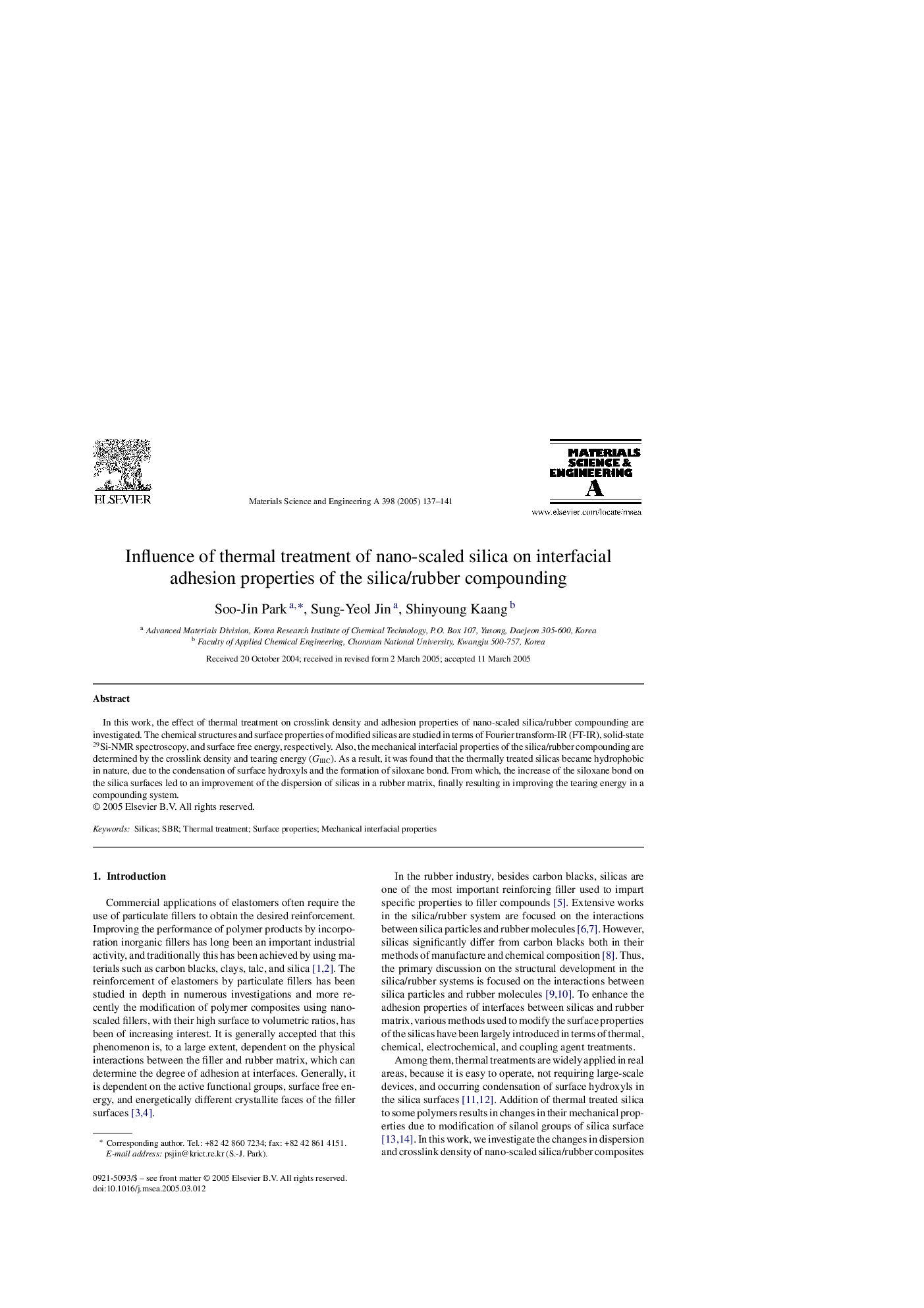| Article ID | Journal | Published Year | Pages | File Type |
|---|---|---|---|---|
| 9796231 | Materials Science and Engineering: A | 2005 | 5 Pages |
Abstract
In this work, the effect of thermal treatment on crosslink density and adhesion properties of nano-scaled silica/rubber compounding are investigated. The chemical structures and surface properties of modified silicas are studied in terms of Fourier transform-IR (FT-IR), solid-state 29Si-NMR spectroscopy, and surface free energy, respectively. Also, the mechanical interfacial properties of the silica/rubber compounding are determined by the crosslink density and tearing energy (GIIIC). As a result, it was found that the thermally treated silicas became hydrophobic in nature, due to the condensation of surface hydroxyls and the formation of siloxane bond. From which, the increase of the siloxane bond on the silica surfaces led to an improvement of the dispersion of silicas in a rubber matrix, finally resulting in improving the tearing energy in a compounding system.
Related Topics
Physical Sciences and Engineering
Materials Science
Materials Science (General)
Authors
Soo-Jin Park, Sung-Yeol Jin, Shinyoung Kaang,
